Principal Place of Residence Exemption Loss if Sold While Overseas Summary of how the Principal Place of Residence (PPR) Exemption is impacted by moving overseas. When Australian homeowners move overseas and become non-residents for tax purposes, selling their...
GST – Margin Scheme – Tug of War – Sellers & Buyers Update
 The Margin Scheme came about so those in the business of selling real property only paid GST on the Buy / Sell Margin – if they weren’t able to claim GST when they purchased the real property now that they are on selling. The purchaser however cannot then claim any GST at all.
The Margin Scheme came about so those in the business of selling real property only paid GST on the Buy / Sell Margin – if they weren’t able to claim GST when they purchased the real property now that they are on selling. The purchaser however cannot then claim any GST at all.
Sellers (if in business & GST Registered – will want to use the Margin Scheme)
Buyers (if in business & GST Registered – will want a GST Taxable Supply – Not the Margin Scheme) If however they are not in business , or it’s a non business purchase they won’t be disadvantaged by the Margin Scheme if used (as they cannot claim the GST on purchase anyway).
Simple Example – John & Mary sell their home to Mr Developer for $300,000, Mr Developer wants to build a strip of shops on a busy road. As John & Mary are not in business they didn’t charge GST on the Sale to Mr Developer.
Seller
Mr Developer now wants to build 5 shops to sell as following –
Sale Price of each Shop $350,000 or a total of $1,750,000
The Development cost were $110,000 per Shop (including GST)
Total Buy Price Net of GST = $300,000 + 5@ ($100,000 – $10,000 GST) = $800,000
The Profit Margin in simple terms would be $1,750,000 – $800,000 = $950,000 or $190,000 each shop
However the GST Margin under the margin scheme would be $1,750,000 – $300,000 = $1,450,000 or $290,000 each shop
The GST Claimed on all development costs during the project are claimed as incurred regardless if the GST Margin Scheme is used on not. It it is only the GST declared on the sale that differs.
Buyer
Prospective Purchaser Mr Butcher Shop is happy to pay $350,000, however wants a Tax Invoice so he can claim the GST on the Purchase $350,000/11 = $31,818.18
Mr Developer wants to use the margin Scheme, states so in the sales contract, and will not provide a tax invoice, Mr Developer’s GST collected will be calculated under the margins scheme
The Margin per shop for the Margin Scheme is –
($1750, 000 – $300,000) / 5 = $290,000 per shop
The GST on the Margin Scheme is –
$290,000 / 11 = $26,363.64
If Mr Developer uses the Margin Scheme he pays the ATO $26,363.36, if not he pays the ATO $31,818.18, in doing so will deny Mr Butcher Shop any right to a GST Claim on the puchase. Mr Developer saves $31,818.18 – $26,363.36) = $5,454.82 in GST, however Mr Butcher Shop losses the right to claim a GST credit of $31,818.18.
The higher the price paid for the land under the margin scheme, the greater the incentive for Mr Developer to want to use the GST Margin Scheme, however if the buyer is GST Registered and buying as part of their business, the sell price may be impacted adversely by the GST treament.
Market Price
The market price for the shops is $350,000 may or may not be independent of any GST Consideration, Mr Butcher Shop, may inadvently purchase the shop on the assumption a GST credit can be claim, only to discover the GST Margin Scheme has denied any GST Claim.
If Mr Butcher Shop had the appropriate due diligence conducted by this solicitor and accountant, he may have been in a better position to negotiate a better price if he was fully aware of the GST implications.
As such Mr Developer will pay more GST, and reduce his net profit margin if he doesn’t use the Margin Scheme $5,454.82 per shop.
Mr Butcher Shop will not be able to claim any GST back so in effect will not be getting the $31,818.18 GST refund or discount so to speak on the purchase of his new shop.
In summary – the GST Margin Scheme was created to be fair for the seller / buyer , but as you can see by the simple example if both are in business and registered for GST – it will be a financial Tug of War.
Umbrella Accountants – Property Accountants Brisbane
Australian Homeowner Moving Overseas and Selling Their Principal Place of Residence (PPR) – Avoiding a $295,200 CGT Bill
Principal Place of Residence Exemption Loss if Sold While Overseas Summary of how the Principal Place of Residence (PPR) Exemption is impacted by moving overseas. When Australian homeowners move overseas and become non-residents for tax purposes, selling their...
Investment Property Capital Gains Tax (CGT) Calculation with PPR Transition
Having an investment property prior or posted to it being a principal place of residence has tricky CGT Calculations. Capital Gains Tax (CGT) is an essential consideration for property owners when selling a property used for different purposes over time. This blog...
Understanding Land Tax in Australia
Picture of a vacant block of land to illustrate it may be subject to land tax What is Land Tax? Land tax is a state and territory-imposed tax on the unimproved value of taxable land owned by individuals, companies, and trusts. It is calculated annually based on a...
Tiny homes have excellent rental yields, income streaming and tax minimisation strategies. How do they compare to a Granny Flat?
What are the tax and investment considerations for a Granny Flat above versus a Tiny Home below? Income Tax Return Reporting - Income Streaming Tiny Homes Tiny home ownership does not have to follow the ownership interest of the underlying property ownership. For...
Easier for Victoricans to build Granny Flats from December 2023.
Secondary Dwelling From December 2023 the Victorian Government has passed planning changes to make it easier to build Granny Flats - or "small secondary dwellings", on existing homes. The Victorian Premier Jacinta Allan revealed that planning permits will no longer be...
Property Investors to ensure income and expenses are correct.
The ATO is particularly targeting property investors that are not using the help of a specialist property tax accountant like Umbrella Property Accountant, due to the high error rate being discovered from ATO Audits. The ATO Audits into self-preparers have uncovered...
Residential Rental Caps & Vacancy Taxes will help supply for tenants?
Gold Coast - Example of the Housing Rental Competing Forces Many Apartments are sitting empty most of the year, including an entire beachfront tower. Gold Coast mayor Tom Tate cited an entire high-rise sitting empty in the triple tower Jewel development at Surfers...
Victorian Labour Government Land Tax Hikes to push up Rents
Victoria was the most locked-down state in Australia, if not the world during Covid, resulting in the Victorian Government accruing over $30 Billion in debt to keep the doors closed. Victorian Statement Government wants to raise $8.6 Billion over the next 4 years by...
Joint Venture(JV) Tax Considerations for Property Developers
Joint Venture tax understanding for property developers in Australia Joint Venture Agreement What is a (JV) for Property Development A joint venture (JV) is a cooperative agreement between two or more parties in which all parties contribute their resources (such as...
Labor Targets Housing with ‘Shared Equity Scheme
A federal Labor government would deliver a $329-million help-to-buy scheme, providing 10,000 Australians with a government guarantee of up to 40 per cent on new homes or 30 per cent on existing homes with a two per cent deposit.



